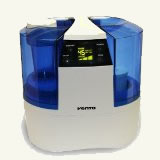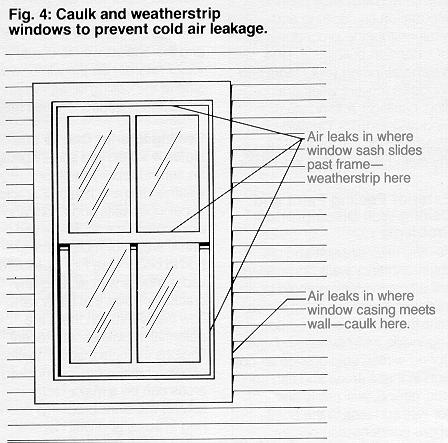Humidifiers
Construction Moisture
Malfunctioning Combustion Appliances
Cool Surface Condensation Problems
Window Surface Problems

Figure 1 - Table top home humidifier
Many homeowners use humidifiers to add moisture to their homes in winter. In the past, when homes were leaky and so less energy efficient, much of the moisture generated inside the home went out with the warm air escaping around and through windows and doors.
Overly dry air-was common, and people experienced static electricity buildup on carpets and clothes, breathing difficulties due to dry nasal passages and somewhat destructive over-drying of furniture. To combat this dryness, they commonly used humidifiers. Some were incorporated directly into forced air heating systems, and moisture was circulated in the home along with heated air. A second type of humidifier, the free-standing model, is portable and can be moved freely around the home to provide moisture where it is most needed. Whether you have extensively weatherized your home or not, experiencing condensation problems means you should not use a humidifier.
Construction Moisture:
Homeowners who move into a: newly constructed home or complete remodeling projects often experience high moisture levels in the interior as the building materials and systems dry. If it is necessary to close the house because of cold weather, the problem may seem excessively serious. Over time, the building materials will dry and a form of equilibrium will be established. In the meantime, airing the house when you can and using exhaust fans will help to move the moist air to the outside.
Malfunctioning Combustion Appliances:
Oil-fired or gas-fired heating, appliances that are not functioning properly or heating units that are not vented can cause a buildup of moisture in a dwelling. If you suspect any combustion appliance in your home is not functioning correctly, have a repair person inspect it. Heating systems, in particular, should be regularly inspected and adjusted by a heating contractor. Oil-fired furnaces need annual inspections. Gas-fired systems, depending on their age, can be inspected less frequently, though three years is the maximum time a gas-fired unit should go without being serviced. If you use space heaters that do not have vents in the home, follow the manufacturer's use and maintenance instructions carefully.
Cool Surface Condensation Problems:
In less energy-efficient homes, cool surfaces are readily available for water vapor to condense and collect on. Warming these surfaces by adding insulation or cutting down on the amount of cold air that can get to them by caulking and weather-stripping will lessen condensation problems.
Window Surface Problems:
Condensation on window surfaces in cool or cold months can be controlled by adding layers of glass in the form of storm windows or using double or triple glazed window units, installing a plastic film on the outside or inside of the window frame (a less expensive way to add storm window protection), repairing broken glass, and sealing any leaks in and around the window with weather-stripping and caulking on both the inside and outside.

